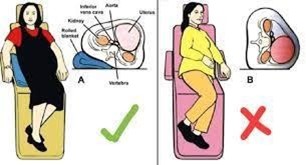A nurse is reinforcing teaching to transition from breastfeeding to whole milk with the parents of an infant. Which of the following months of age should the nurse recommend for transitioning the infant to whole milk?
8 months
10 months
6 months
12 months
The Correct Answer is D
Choice A rationale: Eight months is too early to transition to whole milk. At this age, infants still need the complete nutrition provided by breast milk or formula.
Choice B rationale: Ten months is still too early for transitioning to whole milk. Breast milk or formula should be the primary source of nutrition until around 12 months of age.
Choice C rationale: At 6 months of age, infants are usually just starting to introduce solid foods, but breast milk or formula remains the primary source of nutrition. Transitioning to whole milk at this age is not recommended.
Choice D rationale: The American Academy of Pediatrics (AAP) recommends transitioning from breast milk or formula to whole cow's milk at around 12 months of age. Before that age, breast milk or formula provides essential nutrients for the baby's growth and development.
Nursing Test Bank
Naxlex Comprehensive Predictor Exams
Related Questions
Correct Answer is C
Explanation
Choice A rationale:
Elevating the client's legs is not the first action to address late decelerations. Positioning the client on her side is the priority intervention.
Choice B rationale:
Administering oxygen via a face mask is an appropriate intervention for late decelerations, but it is not the first action. Positioning the client on her side is the priority.
Choice C rationale:
Positioning the client on her side can relieve pressure on the vena cava and improve fetal oxygenation, which is crucial in managing late decelerations.
Choice D rationale:
Increasing the infusion rate of the IV fluid may not directly address the cause of late decelerations and is not the first action to take in this situation.

Correct Answer is A
Explanation
Choice A rationale: Misoprostol is a prostaglandin analog and is contraindicated for use during labor at 32 weeks of gestation as it can lead to uterine hyperstimulation, which may pose a risk to the preterm fetus.
Choice B rationale: Folic acid is a vitamin supplement and is not contraindicated during labor. However, it is typically taken earlier in pregnancy to prevent neural tube defects.
Choice C rationale: Nifedipine is a calcium channel blocker that may be used to suppress preterm labor, and it is not contraindicated at 32 weeks of gestation.
Choice D rationale: Terbutaline is a beta-adrenergic agonist that may be used to relax the uterine smooth muscles and inhibit preterm labor. It is not contraindicated at 32 weeks of gestation.
Whether you are a student looking to ace your exams or a practicing nurse seeking to enhance your expertise , our nursing education contents will empower you with the confidence and competence to make a difference in the lives of patients and become a respected leader in the healthcare field.
Visit Naxlex, invest in your future and unlock endless possibilities with our unparalleled nursing education contents today
Report Wrong Answer on the Current Question
Do you disagree with the answer? If yes, what is your expected answer? Explain.
Kindly be descriptive with the issue you are facing.
